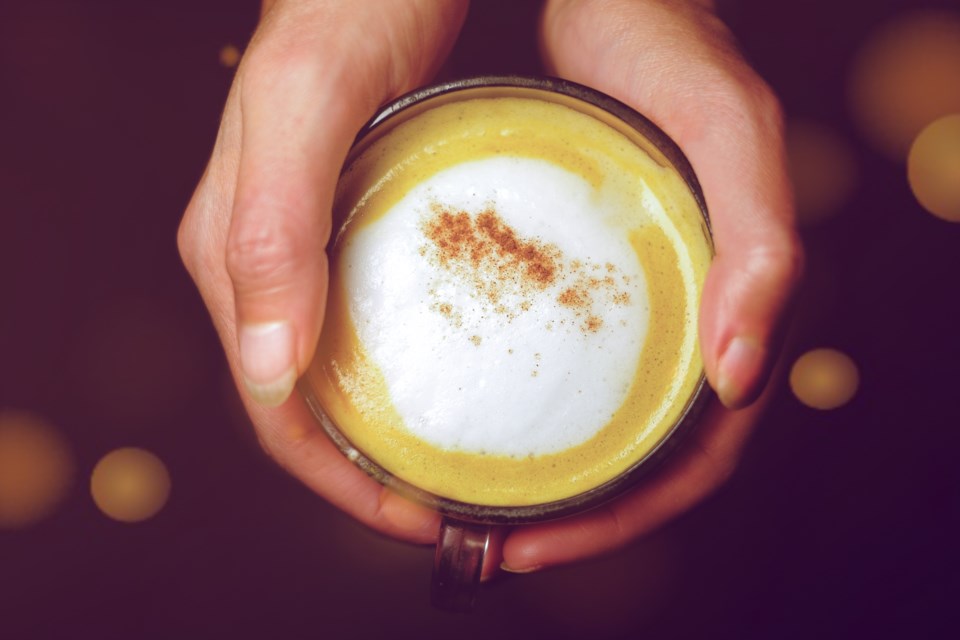I still remember the heady days when pumpkins’ association with autumn was limited to whipped cream-topped pie at Thanksgiving and crudely carved jack-o’-lanterns at Halloween.
Not so anymore.
At a certain point over the past few years, we decided as a society that pumpkin-spiced crap was going to be our new collective obsession, turning what began as a cute, seasonal trend at your local coffee shop to an onslaught of sugary, orange bullshit proliferating our shelves.
So, how did pumpkin spice become the unofficial flavour of fall? Well, we (mostly) have Starbucks to thank.
Although so-called pumpkin spice—used to flavour pumpkin pie—can be found in cookbooks from as far back as the 1890s, it was the coffee giant that helped turn it into a global phenomenon.
Fresh off the success of its peppermint mocha, launched in 2002 and described by Starbucks as its first “blockbuster seasonal beverage,” the company’s brain trust was looking for the next seasonal craze. Customer feedback showed chocolate and caramel flavoured drinks reliably performed best, and the scientists at Starbucks’ Seattle “Liquid Lab” came up with roughly 100 different beverage concepts to pitch to corporate, including the famed pumpkin spice latte (or PSL, as it became known among disciples).
As the story goes, the company was initially hesitant to put all its eggs in the pumpkin basket, but the prevailing philosophy was it needed something bold and unique to offer customers. In 2003, Starbucks tested the PSL in about 100 stores in Vancouver and Washington, D.C. It was a hit.
“Within the first week of the market test, we knew we had a winner,” Peter Dukes, who led Starbucks’ espresso beverage team at the time (yes, they have an espresso beverage team), told the company’s website.
Thus began the slow, inexorable march towards pumpkin-spice ubiquity. Twenty years later, and not only has Starbucks vastly expanded its roster of pumpkin-flavoured products, but everyone from Krispy Kreme to 7-Eleven and even frickin’ Bed Bath and Beyond has since jumped on the pumpkin bandwagon. Today, there are pumpkin beers, baked goods, ice cream, chocolate bars, breakfast cereal, Jell-O, granola, even goddamn pumpkin-spice make-up!
The crazy thing is, even after 20 years, pumpkin spice sales are still growing. According to NielsenIQ data, as of July 29, consumers spent US$802.5 million on pumpkin products over the past year, up from $536.6 million in the same period in 2019.
So, what gives? How are we spending nearly a billion dollars a year on pumpkin products? Does all this stuff even taste good? (Dear reader, it does not.) Does pumpkin-spiced crap commonly include actual pumpkin in its ingredient list? (Dear reader, it does not.)
It’s a question Psychology Today tackled in a 2020 article, with researchers pegging pumpkin’s popularity to a handful of factors, both biological and cultural. Typically a combination of nutmeg, cinnamon, cloves, and ginger, pumpkin spice (specifically, nutmeg) generally contains high amounts of myristicin, a naturally occurring compound related to peyote. Cinnamon, meanwhile, contains eugenol, which has a calming, sedative effect. Clove contains a chemical that relieves pain, similar to novocaine and lidocaine. And ginger, as most moms are aware, is often used to reduce nausea and can lead to a sense of relaxation.
Taken in large doses, each of these spices can cause serious health complications, but in the miniscule amounts found in a latte or muffin, it’s possible pumpkin spice comes with a mild psychoactive benefit. (Seems like there are far more efficient ways to get high on your own supply, but hey, that’s just me.)
For my money, however, the bigger factor is an emotional one. The rollout of pumpkin products each year (and it’s happening earlier and earlier: Starbucks began offering the PSL on Aug. 24 this year, a week earlier than 2022) signals the unofficial start of fall, and after another hot and dry summer, the arrival of pumpkin spice, and the cooler weather it brings, is probably a welcome relief to many.
Pumpkins, of course, are deeply rooted in a sense of nostalgia, harkening back to epic Thanksgiving feasts of years past and the trick-or-treating that lit us up as kids every Halloween.
Psychology Today also likens it to a broader “bandwagon effect” we see pretty much every time we’re on our social media feeds these days.
“The seeming popularity and proliferation of pumpkin spice products may cause some people to feel like they should ‘get with it’ and be a part of the pumpkin spice craze,” the publication wrote.
So, as we head into fall and you find yourself wondering how you became such a desperate pumpkin junkie, you can rest assured in the hard truth that getting a handle on your addiction is now virtually impossible for a variety of physical, social and cultural reasons beyond your control. There’s gotta be a hotline that can help out there somewhere.




